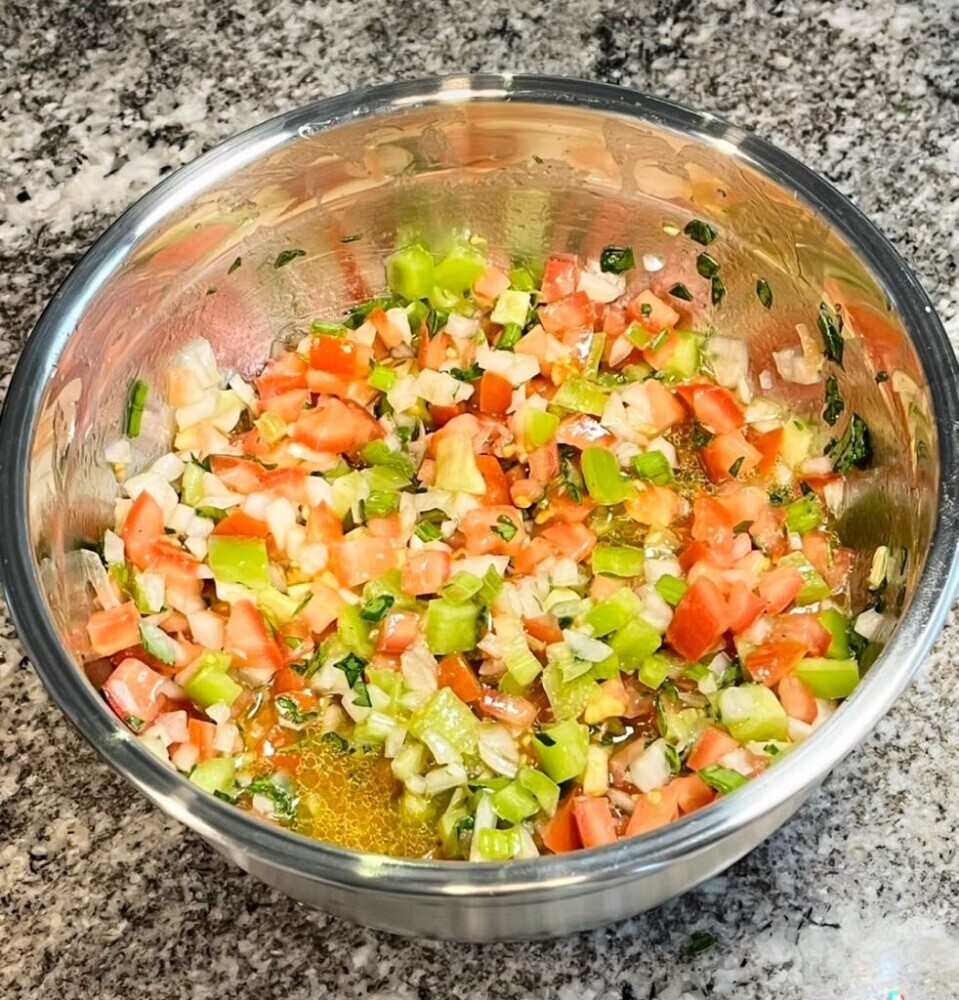Brazilian Vinaigrette

Introduction
Ever wondered how Brazilian vinaigrette became such a staple in Brazilian cuisine? The roots of this tasty, colorful salad actually stretch back quite far. Originally inspired by the Portuguese love for simple, fresh salads, Brazilian settlers adapted the recipe to include local ingredients like bell peppers, onions, and tomatoes.
In the early days, Brazilian vinaigrette was more than just a side dish. It was a vibrant symbol of the country’s agricultural abundance. Farmers would gather fresh produce, and communities came together to share meals that often featured this zesty salad. Brazilians began incorporating it into meals around the 19th century, finding that the tangy flavors perfectly complemented their grilled meats and hearty stews.
As time went on, Brazilian vinaigrette evolved. Different regions added their own twists, incorporating local herbs, adding a splash of lime juice, or even tossing in some chopped chili peppers. Each variation brought new life to the dish, making it a beloved part of Brazilian culinary tradition. Today, it’s hard to imagine a Brazilian barbecue or feijoada without a bowl of this refreshing salad on the table.
Brazilian Vinaigrette in Modern Cuisine and Celebrations
In the world of Brazilian cuisine, vinaigrette isn’t just a simple side. It has a special place, accompanying a variety of dishes. Pairing it with grilled meats, like the famous Brazilian barbecue (churrasco), is almost a rule. The crisp, acidic flavors cut through the richness of the meat, balancing the meal perfectly.
Brazilian holidays and special occasions often feature this zesty salad. During celebrations like Carnaval and Festas Juninas, you’ll find vinaigrette adding a burst of fresh flavor to the festive spreads. It’s also a must-have at family gatherings and picnics, especially on Brazil’s Independence Day (Sete de Setembro), where traditional foods are celebrated.
What’s fascinating is how the vinaigrette varies across Brazil. In the Northeastern region, you might find it with a spicy kick, thanks to locally grown chili peppers. Down South, a splash of wine vinegar might be added, giving it a unique twist. No matter where you are in Brazil, each region brings its own flair to this classic dish.
In contemporary Brazilian cuisine, vinaigrette has remained a constant favorite. It’s not just limited to traditional pairings; you’ll even see it in gourmet settings, served alongside seafood or used as a topping for bruschetta. This adaptability keeps it relevant and cherished in modern culinary circles, bridging the gap between old traditions and new innovations.
Our family has been eating at Brazilian restaurants and steak houses for many years now. Between 2022 and 2023 we had the experience of hosting an au pair (nanny) from Brazil who introduced us to other authentic Brazilian food that we never tried at any Brazilian eatery, and now Brazilian food is one of our favorite foods. Brazilian Churrasco style meats are the best, but as grandma always said, you must always eat your vegetables, and this recipe fulfills that in one of the tastiest ways possible.
Ingredients
- 1 medium yellow onion diced small
- 2 green onions sliced
- 4 tomatoes diced
- 1 bell pepper diced small
- 1/4 cup chopped fresh parsley
- 1/2 cup extra virgin olive oil
- 1/4 cup white wine vinegar
- 1 tsp kosher salt
- 1/4 tsp black pepper
Instructions
Place all chopped vegetables into a big salad bowl and add the extra virgin olive oil plus the white wine vinegar and combine well. Once the salad is complete, you can either eat it right away or allow the ingredients and flavors to come together.
Best eaten with fish, but can be eaten with any churrasco style meat, and it pairs well with other side dishes such as Brazilian Rice or Brazilian Beans.
Enjoy!
